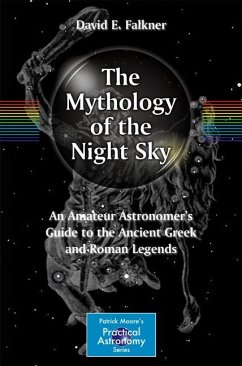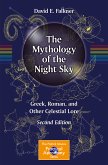The Mythology of the Night Sky strikes a balance between backyard astronomy and ancient mythology. Organized by seasons, this book describes Ptolemy's 48 constellations with location and description in detail, while also telling the mythological tales in full. Along with the named constellations, this title also incorporates the lore behind the christening of the planets and their satellites. Readers discover the importance of the ancient characters, why they were immortalized in the sky, how several constellations are all woven into the same story and how satellite names are related to their planets.
Dieser Download kann aus rechtlichen Gründen nur mit Rechnungsadresse in A, B, BG, CY, CZ, D, DK, EW, E, FIN, F, GR, HR, H, IRL, I, LT, L, LR, M, NL, PL, P, R, S, SLO, SK ausgeliefert werden.









